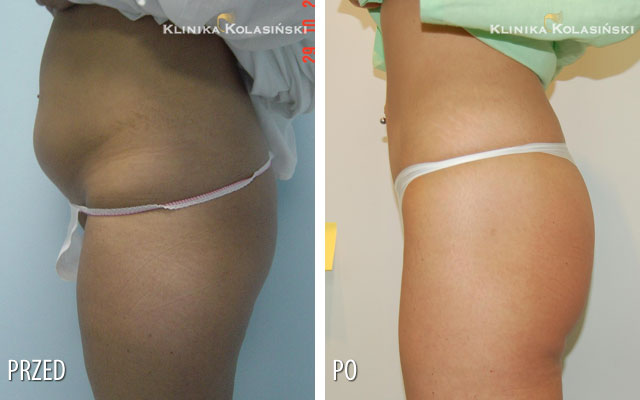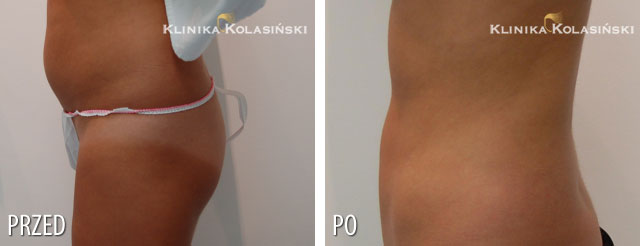If you’re considering liposuction
Liposuction is a procedure that can help sculpt the body by removing unwanted fat from specific areas, including the abdomen, hips, buttocks, thighs, knees, upper arms, chin, cheeks and neck. During the past decade, liposuction, which is also known as “lipoplasty” or “suction lipectomy”, has benefited from several new refinements.
Today, a number of new techniques, including the tumescent technique, and the super-wet technique, are helping many surgeons to provide selected patients with more precise results and quicker recovery times.
The tumescent technique is a relatively new liposuction method that can reduce post operative bruising, swelling and pain. Because blood loss is minimized during tumescent liposuction, use of this technique reduces the chance that a blood transfusion will be needed.
In the tumescent technique, areas of excess fat are injected with a large amount of anesthetic liquid before liposuction is performed . The liquid causes the compartments of fat to become swollen and firm. The expanded fat compartments allow the liposuction cannula to travel smoothly beneath the skin as the fat is removed.
Although no type of liposuction is a substitute for dieting and exercise, liposuction can remove stubborn areas of fat that don’t respond to traditional weight-loss methods.
If you’re considering liposuction, this text will give you a basic understanding of the procedure – when it can help, how it is performed and how you might look and feel after surgery. It won’t answer all of your questions, since much depends on your individual circumstances. Please ask our surgeon if there is anything about the procedure you don’t understand.
The best candidates for liposuction
To be a good candidate for liposuction, you must have realistic expectations about what the procedure can do for you. It’s important to understand that liposuction can enhance your appearance and self confidence, but it won’t necessarily change your looks to match your ideal or cause other people to treat you differently. Before you decide to have surgery, think carefully about your expectations and discuss them with our surgeon.
The best candidates for liposuction are normal-weight people with firm, elastic skin who have pockets of excess fat in certain areas. You should be physically healthy, psychologically stable and realistic in your expectations. Your age is not a major consideration; however, older patients may have diminished skin elasticity and may not achieve the same results as a younger patient with tighter skin.
Liposuction carries greater risk for individuals with medical problems such as diabetes, significant heart or lung disease, poor blood circulation, or those who have recently had surgery near the area to be contoured
Initial consultation
In your initial consultation, our surgeon will evaluate your health, determine where your fat deposits lie and assess the condition of your skin. Our surgeon will explain the body-contouring methods that may be most appropriate for you.
Be frank in discussing your expectations with our surgeon. He or she should be equally frank with you, describing the procedure in detail and explaining its risks and limitations.
Liposuction is normally safe, as long as patients are carefully selected, the operating facility is properly equipped and the physician is adequately trained.
However, it’s important to keep in mind that even though a well-trained surgeon and a state-of-the art facility can improve your chance of having a good result, there are no guarantees. Though they are rare, complications can and do occur. Risks increase if a greater number of areas are treated at the same time, or if the operative sites are larger in size. Removal of large amount of fat and fluid may require longer operating times than may be required for smaller operations.
The combination of these factors can create greater hazards for infection; delays in healing; the formation of fat clots or blood clots, which may migrate to the lungs and cause death; excessive fluid loss, which can lead to shock or fluid accumulation that must be drained; and unfavorable drug reactions.
The scars from liposuction are small and strategically placed to be hidden from view. However, imperfections in the final appearance are not uncommon after lipoplasty. The skin surface may be irregular, asymmetric or even “baggy”, especially in the older patient. Numbness and pigmentation changes may occur. Sometimes, additional surgery may be recommended.
Preparing for your surgery
Our surgeon will give you specific instructions on how to prepare for surgery, including guidelines on eating and drinking, smoking, and taking or avoiding vitamins and certain medications. If you develop a cold or an infection of any kind, especially a skin infection, your surgery may have to be postponed.
While you are making preparations, be sure to arrange for someone to drive you home after the procedure and, if needed, to help you at home for a day or two.
Anesthesia for liposuction
Various types of anesthesia can be used for liposuction procedures. Together, you and our surgeon will select the type of anesthesia that provides the most safe and effective level of comfort for your surgery.
If only a small amount of fat and a limited number of body sites are involved, liposuction can be performed under local anesthesia, which numbs only the affected areas.
However, if a large volume of fat is being removed, liposuction is performed under general anesthesia, so you’ll sleep through the entire operation.
The surgery
Liposuction is a procedure in which localized deposits of fat are removed to recontour one or more areas of the body. The medicated solution – a mixture of intravenous salt solution, lidocaine and epinephrine – is injected into fatty areas before the fat is removed.
Through a tiny incisions, a narrow cannula is inserted and used to vacuum the fat layer lies beneath the skin. The cannula is pushed then pulled through the fat layer, breaking up the fat cells and suctioning them out. The suction action is provided by vacuum pump. If many sites are being treated, our surgeon will then move on to the next area, working to keep the incisions as inconspicuous as possible.
The tumescent technique helps the fat be removed more easily, reduces blood loss and provides anesthesia during and after surgery. Fluid injection also helps to reduce the amount of bruising after surgery.
After your surgery
After surgery, you will likely experience some fluid drainage from the incisions. To control swelling and to help your skin better fit its new contours, you may be fitted with a snug elastic garment to wear over the treated area for a few weeks.
Don’t expect to look or feel right after surgery. Even though the newer techniques are believed to reduce some post-operative discomfort, you may still experience some pain, burning, swelling, bleeding and temporary numbness. Pain can be controlled with medications prescribed by our surgeon, though you may still feel stiff and sore for a few days.
It is normal to feel a bit anxious or depressed in the days or weeks following surgery. However, this feeling will subside as you begin to look and feel better.
Getting back to normal
Healing is a gradual process. Our surgeon will tell you to start walking around as soon as possible to reduce swelling and to help prevent blood clots from forming in your legs. You will begin to feel better after about a week or two and you should be back at work within a few days following your surgery. The strips are removed on their own within the first week to 10 days.
Activity that is more strenuous should be avoided for about a month as your body continues to heal. Although most of the bruising and swelling usually disappears within three weeks, some swelling may remain for three months or more.
Our surgeon will schedule follow-up visits to monitor your progress and to see if any additional procedures are needed.
Your new look
You will see a noticeable difference in the shape of your body quite soon after surgery. However, improvement will become even more apparent after about four to six weeks, when most of the swelling has subsided. After about three months, any persistent mild swelling usually disappears and the final contour will be visible.
If your expectations are realistic, you will probably be very pleased with the results of your surgery. You may find that you are more comfortable in a wide variety of clothes and more at ease with your body. And, by eating a healthy diet and getting regular exercise, you can help to maintain your new shape.



